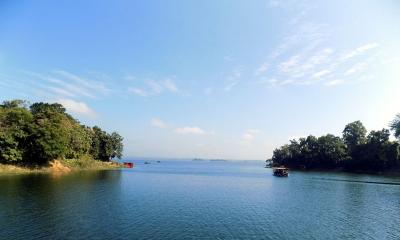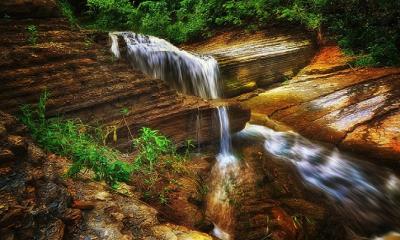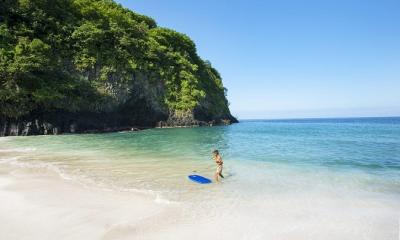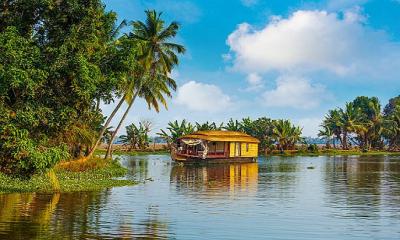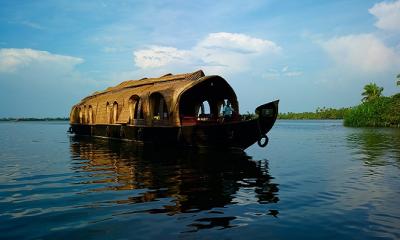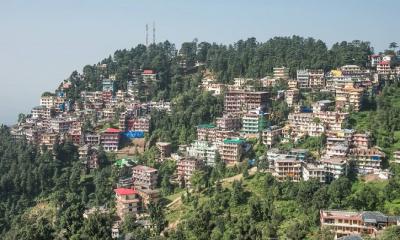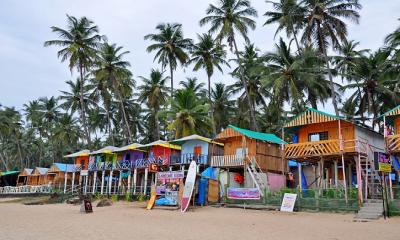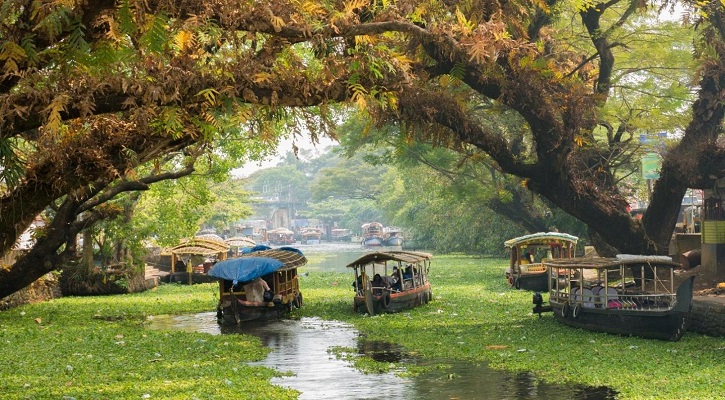
Major attractions of Kerala
- Women`s Corner
- July 23, 2022
Kerala, a state situated on the tropical Malabar Coast of southwestern India, is one of the most popular tourist destinations in the country. Named as one of the ten paradises of the world by National Geographic Traveler, Kerala is famous especially for its ecotourism initiatives and beautiful backwaters. Its unique culture and traditions, coupled with its varied demography, have made Kerala one of the most popular tourist destinations in the world. Growing at a rate of 13.31%, the tourism industry is a major contributor to the state's economy
Beaches:
Flanked on the western coast by the Arabian Sea, Kerala is one of a long coastline of 580 km (360 mi); all of which is virtually dotted with sandy beaches. Kovalam beach near Thiruvananthapuram was among the first beaches in Kerala to attract tourists. Rediscovered by backpackers and tan-seekers in the 1960s and followed by hordes of hippies in the 1970s, Kovalam is today the most visited beach in the state.
Other popularly visited beaches in the state include those at Kappad, Alappuzha, Kozhikode Beach, Marari Beach (Mararikulam, Alappuzha), Nattika (Thrissur), Vadanappilly beach (Thrissur), Cherai Beach, Ponnani beach, Bekal, Kappad Beypore beach, Marari beach, Fort Kochi, and Varkala.
Read More: Bacon, Potato, and Egg Casserole
The Muzhappilangad Beach at Kannur and Thikkodi Beach at Kozhikode are the only two drive-in beaches in India. Marari beach was rated as one of the world's top five Hammock Beaches by the National Geographic survey and has been cited in the international press. Payambalam beach is one of the most beautiful beaches in Kerala situated in Kannur. Other beaches in Kannur include Baby beach, Meenkunnu Beach, Azhikode Beach, Madaiparra Beach, Chootath Beach, and Mermaid Beach.
Backwaters:
The backwaters in Kerala are a chain of brackish lagoons and lakes lying parallel to the Arabian Sea coast (known as the Malabar Coast). Houseboat or Kettuvallam rides in backwaters are a major tourist attraction in Kerala. Backwater tourism is centered mostly around Kerala like Alleppey, Kumarakom, Ashtamudi Lake, Kollam, Ponnani, Kavvayi Backwaters, and Bekal. Boat races held during festival seasons are also a major tourist attraction in the backwater regions.
The backwater network includes large lakes such as the Ashtamudi Lake, the largest among them, linked by 1500 km of canals, both man-made and natural and fed by several rivers, and extending virtually the entire length of Kerala state. The backwaters were formed by the action of waves and shore currents creating a low barrier island across the mouths of the many rivers flowing down from the Western Ghats range.
Read More: Why you should egg for breakfast?
Backwaters in Kerala for honeymoon and family holidays are quite popular. You may sort some of the best Kerala backwaters tour packages after reading about Kerala backwaters' reviews available on various websites.
Hill stations:
Eastern Kerala consists of land encroached upon by the Western Ghats; the region thus includes high mountains, gorges, and deep-cut valleys. The wildest lands are covered with dense forests, while other regions lie under tea and coffee plantations (established mainly in the 19th and 20th centuries) or other forms of cultivation.
The Western Ghats rise an average of 1500 m elevation above sea level. Some of the popular hill stations in the region are Munnar, Vagamon, Paithalmala, Wayanad, Nelliyampathi, Nilambur, Elapeedika, Peermade, Thekkady, and Ponmudi. Kurumbalakotta Hill in Wayand is becoming a great tourist attraction now.
Wildlife:
Most of Kerala, whose native habitat consists of wet evergreen rainforests at lower elevations and highland deciduous and semi-evergreen forests in the east, is subject to a humid tropical climate. However, significant variations in terrain and elevation have resulted in a land whose biodiversity registers as among the world's most significant. Most of Kerala's significantly biodiverse tracts of wilderness lie in the evergreen forests of its easternmost districts. Kerala also hosts two of the world's Ramsar Convention-listed wetlands: Lake Sasthamkotta and the Vembanad-Kol wetlands are noted as being wetlands of international importance.
Read More: Why do American’s call them “french” fries?
There are also numerous protected conservation areas, including 1455.4 km2 of the vast Nilgiri Biosphere Reserve. In turn, the forests play host to such major fauna as the Asian elephant (Elephas maximus), Bengal tiger (Panthera tigris Tigris), leopard (Panthera pardus), Nilgiri tahr (Nilgiritragus hypocrisy), and grizzled giant squirrel (Ratufa macroura).[20] More remote preserves, including Silent Valley National Park in the Kundali Hills, harbor endangered species such as the lion-tailed macaque (Macaca silenus), Indian sloth bear (Melursus (Ursus) Ursinus Ursinus),
and gaur (the so-called "Indian bison"—Bos Taurus). More common species include Indian porcupine (Hystrix indica), chital (Axis axis), sambar (Cervus unicolor), gray langur, flying squirrel, swamp lynx (Felis chaus kutas), boar (Sus scrofa), a variety of catarrhine Old World monkey species, gray wolf (Canis lupus), and common palm civet (Paradoxurus hermaphroditus). Many reptiles, such as king cobra, viper, python, various turtles and crocodiles are to be found in Kerala—again, disproportionately in the east. Kerala's avifauna include endemics like the Sri Lanka frogmouth (Batrachostomus moniliger), Oriental bay owl, large frugivores like the great hornbill (Buceros bicornis) and Indian grey hornbill,
as well as the more widespread birds such as peafowl, Indian cormorant, jungle and hill myna, Oriental darter, black-hooded oriole, greater racket-tailed and black drongoes, bulbul (Pycnonotidae), species of kingfisher and woodpecker, jungle fowl, Alexandrine parakeet, and assorted ducks and migratory birds. Additionally, freshwater fish such as kadu (stinging catfish—Heteropneustes fossils) and brackishwater species such as Choottachi (orange chromite—Etroplus maculatus, valued as an aquarium specimen) also are native to Kerala's lakes and waterways.
Read More: What do you think French Fries are Truly French?
Historical monuments:
Historical monuments in Kerala include palaces, forts, and religious institutions. Notable forts include Bekal Fort, St.Angelo Fort, Arkady fort, Chandragiri fort, Hosdurg Fort, Palakkad Fort, Thalassery Fort, Fortaleza da São Tomé, Fort Kochi, St Thomas Fort, and Anchuthengu Fort. Notable palaces include Padmanabhapuram Palace, Kanakakkunnu Palace, Kowdiar Palace, Mattancherry Palace, Arakkal Palace, Shakthan Thampuran Palace, etc. The Malabar Coast is also home to some of the oldest temples, oldest mosques, oldest churches, and oldest synagogues in South Asia. The historic trading food streets in Kerala include S. M. Street (Sweetmeat street) in Kozhikode. Mappila Bay harbor at Kannur is home to both fort and palace. Thalassery Cuisine, a traditional style of cuisine that originated in Northern Kerala due to its historical trade relations, also attracts tourists.
This article is taken from wikipedia.

